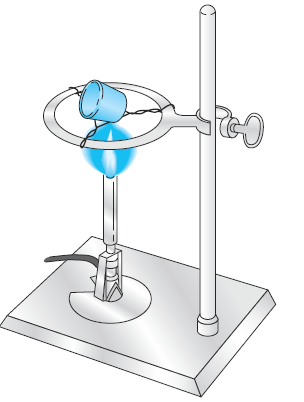

علم الكيمياء

تاريخ الكيمياء والعلماء المشاهير

التحاضير والتجارب الكيميائية

المخاطر والوقاية في الكيمياء

اخرى

مقالات متنوعة في علم الكيمياء

كيمياء عامة


الكيمياء التحليلية

مواضيع عامة في الكيمياء التحليلية

التحليل النوعي والكمي

التحليل الآلي (الطيفي)

طرق الفصل والتنقية


الكيمياء الحياتية

مواضيع عامة في الكيمياء الحياتية

الكاربوهيدرات

الاحماض الامينية والبروتينات

الانزيمات

الدهون

الاحماض النووية

الفيتامينات والمرافقات الانزيمية

الهرمونات


الكيمياء العضوية

مواضيع عامة في الكيمياء العضوية

الهايدروكاربونات

المركبات الوسطية وميكانيكيات التفاعلات العضوية

التشخيص العضوي

تجارب وتفاعلات في الكيمياء العضوية


الكيمياء الفيزيائية

مواضيع عامة في الكيمياء الفيزيائية

الكيمياء الحرارية

حركية التفاعلات الكيميائية

الكيمياء الكهربائية


الكيمياء اللاعضوية

مواضيع عامة في الكيمياء اللاعضوية

الجدول الدوري وخواص العناصر

نظريات التآصر الكيميائي

كيمياء العناصر الانتقالية ومركباتها المعقدة


مواضيع اخرى في الكيمياء

كيمياء النانو

الكيمياء السريرية

الكيمياء الطبية والدوائية

كيمياء الاغذية والنواتج الطبيعية

الكيمياء الجنائية


الكيمياء الصناعية

البترو كيمياويات

الكيمياء الخضراء

كيمياء البيئة

كيمياء البوليمرات

مواضيع عامة في الكيمياء الصناعية

الكيمياء الاشعاعية والنووية
Ashing Filter Papers
المؤلف:
D. A. Skoog, F. J.Holler, D M. West, and S. R. Crouch
المصدر:
Fundamentals of Analytical Chemistry
الجزء والصفحة:
9th. p 27
17-4-2017
1851
Ashing Filter Papers
If a heat lamp is used, the crucible is placed on a clean, nonreactive surface, such as a wire screen covered with aluminum foil. The lamp is then positioned about 1 cm above the rim of the crucible and turned on. Charring takes place without further attention. The process is considerably accelerated if the paper is moistened with no more than one drop of concentrated ammonium nitrate solution. The residual carbon is eliminated with a burner, as described in the next paragraph. Considerably more attention must be paid if a burner is used to ash a filter paper because the burner produces much higher temperatures than a heat lamp. Thus, mechanical loss of precipitate may occur if moisture is expelled too rapidly in the initial stages of heating or if the paper bursts into flame. Also, partial reduction of some precipitates can occur through reaction with the hot carbon of the charring paper. This reduction is a serious problem if reoxidation following ashing is inconvenient. These difficulties can be minimized by positioning the crucible as illustrated in Figure 1.1. The tilted position allows for the easy access of air.

Figure 1.1 Ignition of a precipitate. Proper crucible position for preliminary charring is shown.
A clean crucible cover should be kept handy to extinguish any flame. Heating should begin with a small flame. The temperature is gradually increased as moisture is evolved and the paper begins to char. The amount of smoke given off indicates the intensity of heating that can be tolerated. Thin wisps are normal. A significant increase in smoke indicates that the paper is about to flash and that heating should be temporarily discontinued. Any flame should be immediately extinguished with a crucible cover. (The cover may become discolored from the condensation of carbonaceous products. These products must ultimately be removed from the cover by ignition to confirm the absence of entrained particles of precipitate.) When no further smoking can be detected, heating is increased to eliminate the residual carbon. Strong heating, as necessary, can then be undertaken. This sequence usually precedes the final ignition of a precipitate in a muffle furnace, where a reducing atmosphere is equally undesirable.















 قسم الشؤون الفكرية يصدر مجموعة قصصية بعنوان (قلوب بلا مأوى)
قسم الشؤون الفكرية يصدر مجموعة قصصية بعنوان (قلوب بلا مأوى) قسم الشؤون الفكرية يصدر مجموعة قصصية بعنوان (قلوب بلا مأوى)
قسم الشؤون الفكرية يصدر مجموعة قصصية بعنوان (قلوب بلا مأوى) قسم الشؤون الفكرية يصدر كتاب (سر الرضا) ضمن سلسلة (نمط الحياة)
قسم الشؤون الفكرية يصدر كتاب (سر الرضا) ضمن سلسلة (نمط الحياة)

















